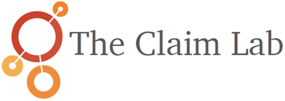January 2017 – This Medical Director cares about Predictive Modeling
I’m a geek. I like numbers, models, and the big picture. Like a moth to a flame, I find big data both enticing and terrifying. When it comes to outlining clinical best practices, I want to understand the available evidence. But really, why would a disability and workers compensation medical director care about predictive modeling?
Predictive modeling matters because health resources are finite, though you wouldn’t necessarily know it from the way US health spending continues to rise dramatically even while outcomes lag. To have a shot at righting the course, we need to know three things: where to look for problems, how best to invest scarce resources, and how to anticipate needs instead of constantly playing catch-up. Effective predictive modeling gets us all three.
- Predictive modeling tells us where to look: Absent the ability to measure and predict, we are flying blind. We can’t possibly fix the problem when we can’t identify it. To have a good predictive model, we need to understand the important variables, know how to measure them, and understand how to tell whether the resulting measurements are meaningful. The numbers won’t tell us what’s wrong, but they will tell us where to look.
- Predictive modeling tells us where to invest our resources: Without a good predictive model, the typical clinical intervention program paints with a broad, one-size-fits-all brush. What’s good for the goose is assumed to be good for the gander, whether the gander needs it or not. With health care and claims interventions, that’s expensive, frustrating, and wasteful. If the payoff isn’t enough to justify the cost, even the best interventions will be scrapped.
- Predictive modeling lets us look forward: Everyone’s a great quarterback on Monday morning. When our best measures of success are lagging indicators, all we can do is invest in a clinical program, and hope that the results will justify the expense. With a good predictive model, we can identify the leading indicators that will point toward wise investments of scarce resources.
Here’s an example: just about everyone involved with disability and workers compensation claims believes that effective, early clinical and vocational interventions will shorten the duration of claims that go on longer than they should. But which claims? Absent a good predictive model, the natural inclination is to invest resources in two groups of claims where the intervention is least needed. We will invest resources in those claims that are already likely to resolve, because it feels good when we work with people who return to work quickly. We also will invest in those claims that are least likely to resolve, either because the injury is catastrophic and we want to be heroic, or because the claimant’s motivation is very low and that irritates us.
Neither of those investments pay off nearly as well as would investing in the claims that are on the fence, those that, with a bit of a push, could resolve in a timelier manner to the benefit of the claimant, the employer, and the insurer. You can’t know which claims those are, unless you have a good predictive model that tells you where to look. And that is why this medical director cares very much about predictive modeling. If you care about claim outcomes, you should too.
Dr Kertay can be contacted at: les@drleskertay.com

